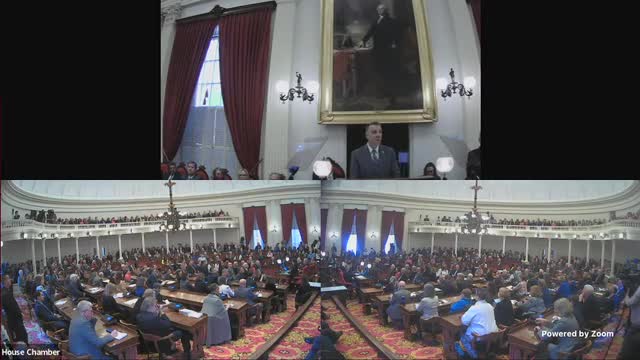Vermont leaders confront demographic crisis and rising crime rates in urgent legislative session
January 04, 2024 | SENATE, Committees, Legislative , Vermont

This article was created by AI summarizing key points discussed. AI makes mistakes, so for full details and context, please refer to the video of the full meeting. Please report any errors so we can fix them. Report an error »

The Joint Assembly of the Vermont Senate convened on January 4, 2024, to address pressing issues affecting the state, particularly demographic challenges and public safety concerns. The meeting highlighted significant trends in Vermont's population and the implications for the workforce and economy.
The session began with a stark presentation of demographic statistics from the Joint Fiscal Office. It was reported that Vermont has seen a decline of 14,000 children under 18 since 2010, alongside a decrease of 28,000 adults aged 40 to 54, who represent the core of the workforce. In contrast, the state has experienced an increase of 48,000 residents over the age of 65. These shifts, described as a long-standing trend, raise alarms about the sustainability of Vermont's economy and the increasing burden on the working-age population to support both the young and elderly.
The discussion emphasized that if these demographic trends continue unchecked, Vermont could face higher educational costs, declining tax revenues, and increased demand for healthcare services. The speaker reiterated concerns previously raised in 2017, 2018, and 2020 regarding the shrinking workforce and the shifting tax burden, labeling it the state's greatest challenge.
Three critical issues were identified as essential to reversing these demographic trends: public safety, affordability, and housing. The meeting addressed rising crime rates, noting that Vermont's rankings in property and violent crime have deteriorated significantly over the past few years. Reports indicated a 56% increase in violent crime and a staggering 166% rise in homicides since 2012. The speaker called for a reassessment of current strategies to ensure public safety and restore confidence in law enforcement.
Additionally, the rising cost of living in Vermont was highlighted as a barrier to attracting and retaining families, complicating efforts to address public safety and other vital areas such as education and healthcare.
In conclusion, the Joint Assembly underscored the urgency of tackling these interconnected issues in the current session. The discussions set the stage for potential legislative actions aimed at reversing demographic declines, enhancing public safety, and improving affordability for Vermont residents.
The session began with a stark presentation of demographic statistics from the Joint Fiscal Office. It was reported that Vermont has seen a decline of 14,000 children under 18 since 2010, alongside a decrease of 28,000 adults aged 40 to 54, who represent the core of the workforce. In contrast, the state has experienced an increase of 48,000 residents over the age of 65. These shifts, described as a long-standing trend, raise alarms about the sustainability of Vermont's economy and the increasing burden on the working-age population to support both the young and elderly.
The discussion emphasized that if these demographic trends continue unchecked, Vermont could face higher educational costs, declining tax revenues, and increased demand for healthcare services. The speaker reiterated concerns previously raised in 2017, 2018, and 2020 regarding the shrinking workforce and the shifting tax burden, labeling it the state's greatest challenge.
Three critical issues were identified as essential to reversing these demographic trends: public safety, affordability, and housing. The meeting addressed rising crime rates, noting that Vermont's rankings in property and violent crime have deteriorated significantly over the past few years. Reports indicated a 56% increase in violent crime and a staggering 166% rise in homicides since 2012. The speaker called for a reassessment of current strategies to ensure public safety and restore confidence in law enforcement.
Additionally, the rising cost of living in Vermont was highlighted as a barrier to attracting and retaining families, complicating efforts to address public safety and other vital areas such as education and healthcare.
In conclusion, the Joint Assembly underscored the urgency of tackling these interconnected issues in the current session. The discussions set the stage for potential legislative actions aimed at reversing demographic declines, enhancing public safety, and improving affordability for Vermont residents.
View full meeting
This article is based on a recent meeting—watch the full video and explore the complete transcript for deeper insights into the discussion.
View full meeting